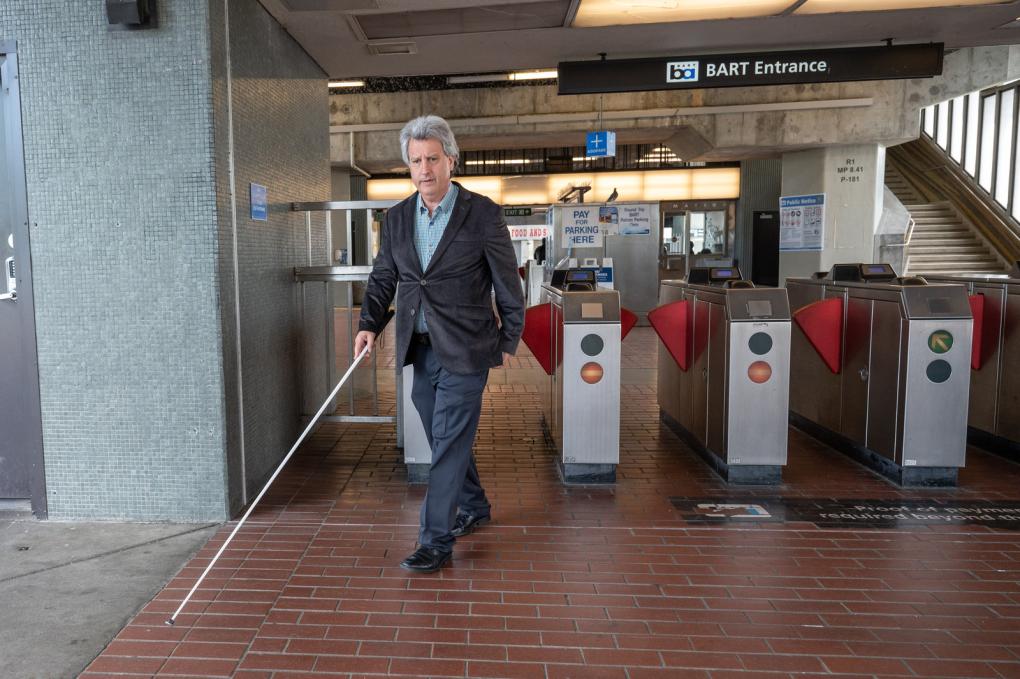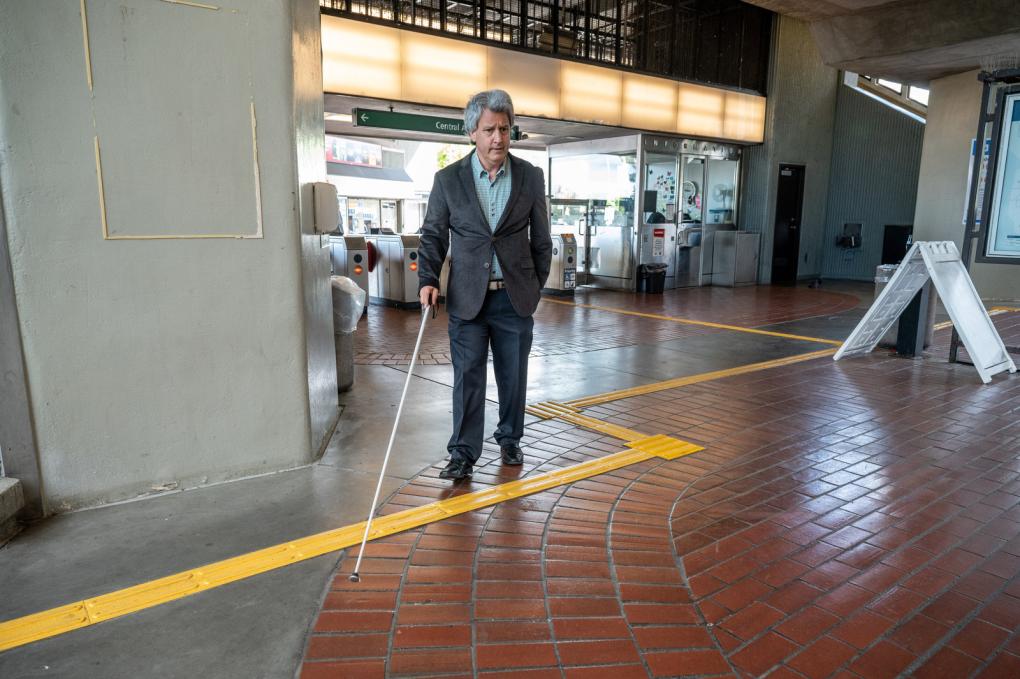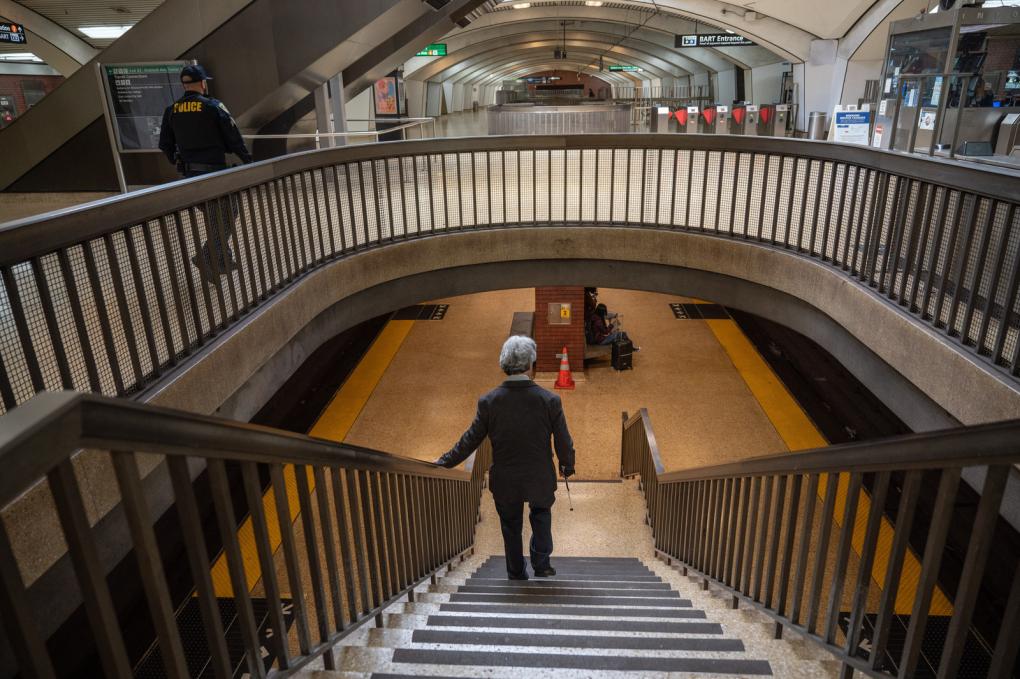Search Results
BART service restored after earlier service disruption
1:30 pm update At 5:10 a.m., one of the dozens of BART’s field network devices failed, disrupting the operational communications network. The system went into fail safe mode and shut down. Engineers and technicians worked to locate the failed device and to restore communications functionality. Service was
BART Board meets Thursday night to discuss budget
The BART Board of Directors meets Thursday, April 23, at 5 pm to consider topics including the Fiscal Year 2016 Preliminary Budget. This is one of several steps before the Board votes on the FY 2016 financial plan. A public hearing for the budget will be set for May 28, 2015 in the Board Room. To address the
BART car cleaner is credited with saving a rider's life
About 15 minutes after midnight on Monday, October 29, 2018, Vincent Seals, a BART train car cleaner, heard a co-worker calling for help from the platform at the Dublin/Pleasanton Station. He ran toward her and she pointed him to the lead car of a train that had just finished its run for the night. Seals
BART breaks ground Wednesday on Oakland Airport Connector
Today Congresswoman Barbara Lee, BART Board President James Fang and Board Member Carole Ward Allen joined local leaders in government, transportation and building trades to celebrate the ceremonial groundbreaking on the $484 million Oakland Airport Connector project. In the short term, construction of this
Accessibility innovation is the focus at June 8 BART conference in Berkeley
By MELISSA JORDANBART Senior Web Producer Around 175 attendees are signed up for a June 8 conference BART is sponsoring that will bring together technologists, accessibility advocates and people with sensory and mobility challenges to brainstorm ideas for making BART more accessible to all. The one-day event
Don't Save BART's Rainforest: Water Intrusion in the Tunnels
The Bay Area is home to some of the most beautiful water vistas in the United States, but all that water causes problems for a subway system like BART. Over four decades after construction, underground trickles and leaks are becoming more and more common. Engineers are exploring options for a more permanent
Construction to begin on subway section of Fremont BART extension
On Monday, August 24, BART will reach another milestone on a major phase of the Warm Springs Extension project that will ultimately bring BART closer to Silicon Valley. BART will issue a “Notice to Proceed” to Shimmick Construction Company, Inc./Skanska USA Civil West California District Inc. Joint Venture
BART backs governor's tax proposition for November ballot
The BART Board of Directors today endorsed Governor Jerry Brown’s budget proposal to generate about $6.9 billion in FY 2012-13 for the state’s general fund. Directors formally voted to support the Governor’s state proposition that will be on the November General Election ballot. The proposition is part of a
BART PD participates in torch run for Special Olympics
BART PD officers and staff teamed up for the Special Olympics Northern California Torch Run from Hayward to Castro Valley. BART PD joined more than 100,000 law enforcement professionals and their friends and families across the country to raise money for Special Olympics. Those fundraising efforts over
BART Connects: Why Eric’s students at the Orientation Center for the Blind ‘fall in love’ with BART when they come to the Bay

Eric Mazariego navigates El Cerrito Plaza Station.
BART is developing detailed descriptions of station tactile guideways, a navigation system for riders who are blind and low vision that leads to bus bays, fare gates, and platform stairs. Find the descriptions here and read the story of their development here.
Eric Mazariegos has been taking BART “forever.”
His earliest BART memory is riding trains to eye doctor appointments in San Francisco with his mom. He was eight years old when he started losing his vision, and it took doctors two years to figure out what was happening. That meant lots of appointments – and lots of BART.
Those long BART rides from his home in Concord to San Francisco and back turned out to be a useful educational tool as his vision loss continued.
“I rode it so much as a kid, I’d memorized a lot of the stations,” he said. “I had a head start [for navigating the system without vision].”
Later in life, he began taking BART regularly, first to get to class at San Francisco State, then a job in Fremont, and now to his current workplace, the Orientation Center for the Blind (OCB).
“It’s my primary mode of transportation,” he said. Rideshares fill in the blanks when necessary (though BART is always his first choice).

Eric uses his white cane to follow the tactile guideway at El Cerrito Plaza.
When Eric navigates a BART station, he is listening to the sounds around him and translating the tactile clues from his white cane to the spatial map in his mind.
Every BART station has a unique soundscape and tactile geography that allows Eric to make his way through a station and onto a BART train.
“I listen for the turnstile, so I know where to enter. I feel for the carpets near the escalators – a clue that I’m almost there. I hear my cane on the metal landing platform. Then I ascend to the platform,” Eric said, describing some of the cues he uses to navigate a station without vision. When he reaches the platform, there are other guide tools – bumpy tactile guideways that signal you are nearing the trackway, speakers announcing the approach of trains.
Part of Eric’s job is to support people like him -- people who are blind or low vision -- in learning to move around their cities and regions.
Eric serves as the Administrator of OCB, a 60-year-old residential training program run by the Department of Rehabilitation (DOR) that provides free on-site training to job seekers who are visually impaired and blind. Said Eric: “The mission of the DOR is everyone who wants to work can work.”
Eric started at OCB as a dorm counselor in 1999. Twenty-five years later, he’s overseeing the organization’s entire staff of 35. To get to OCB from his home in Concord, Eric takes BART, twice a day, five days a week. Without it, his travel options would be extremely limited.

Eric stands on a BART train.
The OCB campus is about a half mile from El Cerrito Plaza Station. Every day of the week, you’ll see OCB participants on campus going to and from classes, which include courses such as Daily Living Skills, Cooking, Braille, Adaptive Technology training, and independent travel. Some students are new to blindness. Some come from outside of the Bay Area. Many live on campus through the duration of their training course.
“I’d have to find a job closer to my house,” he said. “BART opens up the possibilities to work wherever you want, and your job is a huge part of your life. A lot of people take that for granted.”
There’s a learning curve for OCB students ready to set out on their own via public transportation. First, they must learn white cane skills so they can detect obstacles and pathways and safely orient themselves in spaces they haven’t experienced before.
Teachers provide hands-on guidance and “BART field trips” to show students how to confidently navigate the system, and they have tactile maps of some stations so they can get a sense of their layouts. Many students want to go out and learn by experiencing it for themselves.
“When students advance to the point of being able to use BART, they love it. It’s so freeing because it takes you everywhere, runs frequently, and is dependable,” Eric said. “A lot of our students come from Southern California, and they’re not used to having great transit. Many don’t like going back home because they fall in love with our transportation system.”

Eric enters Downtown Berkeley Station's platform via the stairs.
About BART Connects
The BART Connects storytelling series was launched in 2023 to showcase the real people who ride and rely on BART and illustrate the manifold ways the system affects their lives. The subjects of BART Connects will be featured in videos as well as a forthcoming marketing campaign that is slated to run across the Bay Area. Find all the stories at bart.gov/bartconnects.
The series grew out of BART's Role in the Region Study, which demonstrates BART’s importance to the Bay Area’s mobility, cultural diversity, environmental and economic sustainability. We conducted a call for stories to hear from our riders and understand what BART means to them. More than 300 riders responded, and a selection of respondents were interviewed for the BART Connects series.